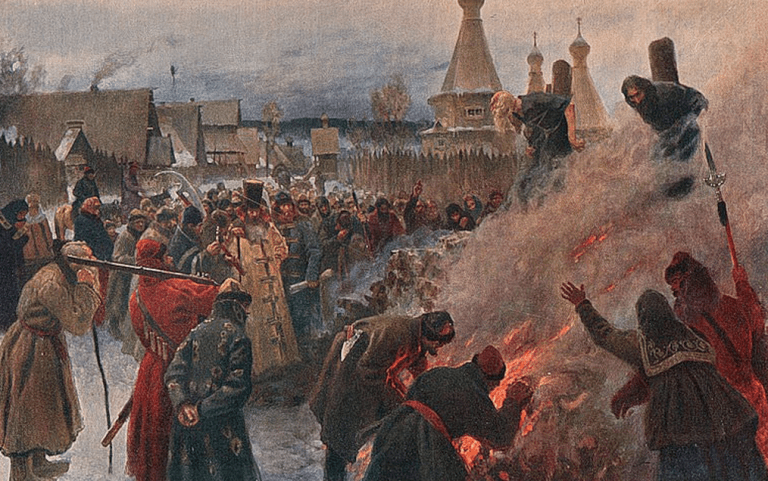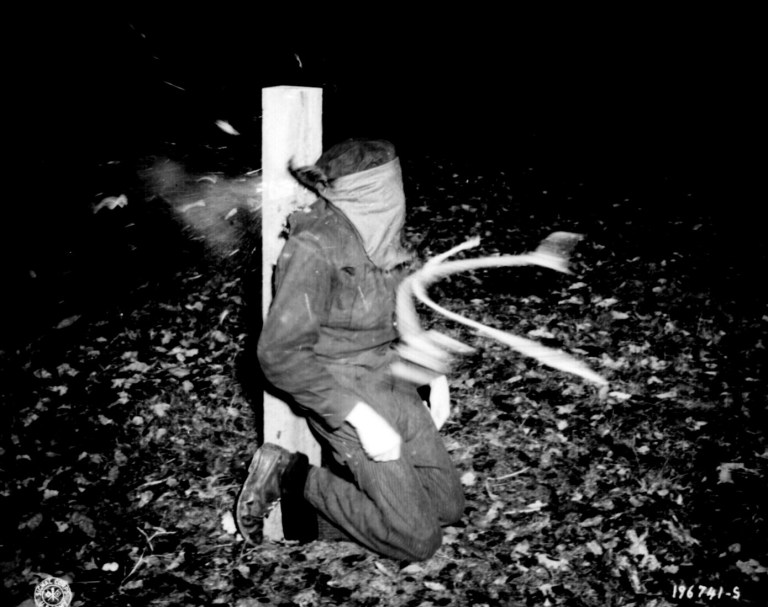The ‘Blood Eagle’ Torture Method As Seen On The Show Vikings: Was It Real, Or The Stuff Of Nordic Legend?
Did the ancient Vikings actually practice this insanely barbaric torture method that involves ripping someone's ribs and lungs out through their back while they were still alive?

Two separate episodes of the hit History Channel show Vikings depict an unimaginably grisly and horrific torture method that is known as the “Blood Eagle.” In the first, the villain Karl Borg is murdered through the extremely cruel and brutal method; in the second, the corrupt King Ella is tortured to death using the “Blood Eagle” method.
What exactly was the “Blood Eagle,” and did the historical Vikings actually practice this insanely barbaric torture method?
The Oxford English Dictionary provides a very brief description of the method:
A Viking method of killing someone, usually the slayer of a man’s father, by cutting out the ribs in the shape of an eagle.
Citing accounts from books published in 1799 and 1834, Smithsonian Magazine provides a much more elaborate (and nauseating) definition of the “Blood Eagle” torture method:
First the intended victim would be restrained, face down; next, the shape of an eagle with outstretched wings would be cut into his back. After that, his ribs would be hacked from his spine with an ax, one by one, and the bones and skin on both sides pulled outward to create a pair of “wings” from the man’s back. The victim, it is said, would still be alive at this point to experience the agony of…“saline stimulant”—having salt rubbed, quite literally, into his vast wound. After that, his exposed lungs would be pulled out of his body and spread over his “wings,” offering witnesses the sight of a final bird-like “fluttering” as he died.
This horrific murder method was allegedly practiced not only on conquered soldiers, but on Viking men who’d performed evil deeds and had thus lost all honor in the eyes of the community. It was allegedly performed throughout all of Scandinavia and also in conquered Viking lands that now comprise modern England and Ireland. The victim was offered up as a ritual sacrifice to Odin, the Nordic god of war.
Ancient literary references to the Blood Eagle first appeared hundreds of years after it was allegedly performed, and the descriptions grew more elaborate and horrifying with each passing century.
Historians are divided as to whether the Blood Eagle was a real practice or simply a myth that originated from misinterpretation of ancient Nordic sagas.
It is alleged that the practice was invented by Ivarr the Boneless, a Viking military leader in occupied England who lived in the 800s and disappeared from the historical record by 870 AD.
However, the first literary reference to this practice didn’t emerge until sometime between 1020 and 1038 AD in this simple passage from the Viking saga The Tale of Ragnar’s Sons, which describes Ivarr’s murder of King Ella:
And Ívarr, the one
who dwelt at York,
had Ella’s back
cut with [an] eagle.
“Cut with an eagle?” Well, that’s sort of vague, isn’t it? There’s nothing about severing the ribs from the spine or pulling the lungs over the exposed ribs—those details would be piled on, one-by-one, over the coming years. And maybe it simply refers to letting the rotting corpse be torn apart and eaten by an actual eagle. Oral tradition can screw up details, especially when there’s a 200-year lapse between the alleged event and the description.
It wouldn’t be until the early 1200s—more than 300 years after the alleged participants had died—that a very detailed and graphic description of the method appeared in the Orkeyinga Saga:
Einarr made them carve an eagle on his back with a sword, and cut the ribs all from the backbone, and draw the lungs there out, and gave him to Odin for the victory he had won.
The Heimskringla Saga from 1230 describes the same alleged incident:
Afterwards, Earl Einarr went up to Halfdan and cut the “blood eagle” on his back, in this fashion that he thrust his sword into his chest by the backbone and severed all the ribs down to the loins, and then pulled out the lungs; and that was Halfdan’s death.
Around 1300 AD in the saga Norna-Gests, another reference appears, but it, too, is vague:
Now the blood eagle
With a broad sword
The killer of Sigmund
Carved on the back.
Many historians suggest that even the earliest literary references to the Blood Eagle were in poems rather than in historical accounts, which may mean they were merely intended for entertainment and not to be taken literally.
Others note that the early references occurred centuries after Scandinavia had been Christianized and that the “Blood Eagle” was merely a propagandist myth used by Christians to make the pagan Vikings appear subhuman. If you know anything about history, it’s that they winners are never content simply winning—they need to justify their victory by claiming their victims were evil and deserved it.
In 1984, historian Roberta Frank published “Viking atrocity and Skaldic verse: the rite of the Blood Eagle,” in which she suggests that the earliest references may have only meant that Vikings would allow birds to peck away at the backs of people that they’d already murdered:
The blood-eagling procedure varies from text to text, becoming more lurid, pagan, and time-consuming with each passing century….[The early references] merely envisage someone scratching, as deeply as possible, a picture of an eagle upon Ella’s back…. Orkneyinga Saga envisages the tearing out of ribs and lungs and provides the information that the rite was intended as a sacrifice to Oðinn…. the late Þáttr af Ragnars sonum gives a full, sensational report of the event… by the beginning of the 19th century, the various sagas’ motifs—eagle sketch, rib division, lung surgery, and ‘saline stimulant’—were combined in inventive sequences designed for maximum horror.
In his book The Pagan Religions of the Ancient British Isles: Their Nature and Legacy, Ronald Hutton tends to agree with Frank’s analysis:
The hitherto notorious rite of the ‘Blood Eagle,’ the killing of a defeated warrior by pulling up his ribs and lungs through his back, has been shown to be almost certainly a Christian myth resulting from the misunderstanding of some older verse.
So it remains unclear whether or not the Blood Eagle was real. But one thing is beyond dispute: Either the Vikings were sick individuals, or their conquerors had a sick imagination. We wouldn’t wish the Blood Eagle upon our worst enemy…OK, except for maybe that one guy who did that one thing one time….




